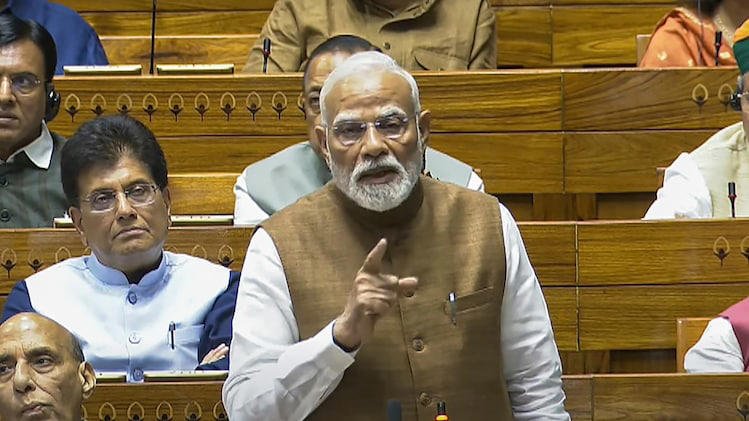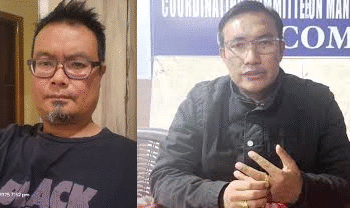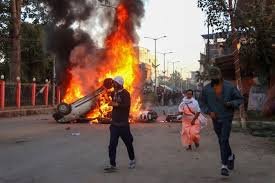India’s pushback on foreign interference during Operation Sindoor came with domestic applause—but possibly at the cost of trade turbulence with the U.S.
By Navin Upadhyay
July 30, 2025: Prime Minister Narendra Modi on Tuesday delivered a forceful speech in the Lok Sabha defending Operation Sindoor, India’s military response to the April 22 Pahalgam terror attack. He choose to indirectly refute, in assertive terms, the repeated claims by U.S. President Donald Trump that he had personally mediated the ceasefire between India and Pakistan. While the speech played well domestically, it sparked questions in strategic circles: Did the tone and content of Modi’s address provoke Washington’s sudden shift in trade posture toward India?
Barely 24 hours after the speech, reports emerged of the Trump administration imposing a steep 25% tariffs on key Indian exports. Until then, both sides had projected confidence in the ongoing trade talks, even amid the turbulence of Operation Sindoor. The timing has raised a simple but serious question: is New Delhi now paying a price for bruising Washington’s ego?
The Speech: Assertion or Aggravation?
In the Lok Sabha, Modi laid out the chronology of India’s military retaliation, emphasizing that the May 10 ceasefire with Pakistan was the result of Islamabad’s capitulation—not American pressure. “. It was Pakistan who came begging,” he said, in a pointed rejection of foreign mediation. He also recounted keeping U.S. Vice President J.D. Vance waiting during a crucial phone call on May 9, framing it as a symbol of India’s resolve.
The remarks were unmistakably targeted at the U.S. narrative. Trump, since late May, has made over 30 claims crediting himself with brokering peace between the two nuclear neighbors. His version has found some support in Pakistan and among segments of the American foreign policy community. Modi’s speech, then, did more than assert sovereignty—it directly challenged Trump’s role and, by extension, his political capital at home.
Read: Biren Audio Tape Case Still Not Heard Despite SC Deadline
This is not inconsequential. Trump is known for his sensitivity to public contradictions, particularly from foreign leaders. In the past, perceived slights—from Canada, Germany, even NATO allies—have prompted swift rhetorical or economic responses. Could India be facing the same?
Trade Tensions: Coincidence or Consequence?
The new U.S. tariff threats, announced just a day after Modi’s address, appear abrupt. Until July 28, officials on both sides had expressed optimism about concluding long-pending trade negotiations. India’s External Affairs Minister S. Jaishankar had gone on record to state that the talks were proceeding “professionally,” and would not be disrupted by recent military developments.
Then came the July 30 punitive tariffs. Officially, the White House has not linked the tariff to Modi’s speech. But in the absence of another obvious trigger—and given Trump’s pattern of linking trade pressure with political messaging—the proximity is difficult to dismiss outright. As one former Indian ambassador privately remarked, “This feels less like a trade move, and more like a response to a bruised ego.”
READ: True Crime Film to Depict Meghalaya Honeymoon Murder
At the same time, it’s important to acknowledge that the Trump administration’s tariff moves are not new or India-specific. The U.S. has also imposed or threatened tariffs on Brazil, Vietnam, and the EU in recent weeks, often without warning or provocation. From that lens, India may simply be caught in a broader protectionist tide.
Still, the timing does matter. Trump’s “America First” approach to trade has frequently overlapped with his personal diplomacy. And for a president who has publicly claimed credit for averting war in South Asia, Modi’s blunt denial on the floor of Parliament could easily be viewed as a snub.
POTUS Trump just announced a 25% #tariff on India along with a penalty.
In geopolitics, Country Doesn’t choose sides, they choose interests. pic.twitter.com/RgEQ8eL06x
— Sumit Raj (@Sumitraj002) July 30, 2025
A Chill, Not a Crisis
The broader U.S.-India relationship is not in crisis. Both nations share long-term strategic interests, including balancing China, promoting the Quad, and countering global terrorism. However, a short-term diplomatic chill is unmistakable. Trump’s earlier snub at the G7—where he skipped a one-on-one meeting with Modi citing a schedule change—may now be interpreted in a new light
What remains to be seen is how long this chill lasts and whether it spills over into other areas such as defense cooperation, energy agreements, or joint diplomatic statements on regional issues.
Domestic Politics, Global Ripples
For Modi, the July 29 speech was as much about addressing domestic criticism as it was about foreign policy. Opposition leaders like Rahul Gandhi had accused him of surrendering to U.S. pressure, with taunts like “Trump said, ‘Narendra, surrender,’ and PM Modi complied.” In this context, Modi’s forceful rebuttal served to reclaim the narrative and project political strength ahead of the upcoming state elections.
But public diplomacy—especially in the age of real-time media—has international consequences. Modi’s words may have been aimed at silencing Congress in the Lok Sabha, but they reached Washington too, where Trump is closely watching how foreign governments respond to his self-styled image as a global dealmaker.
Did Modi’s speech directly trigger the U.S. tariff “bomb”? There’s no smoking gun, but the circumstantial evidence is strong enough to suggest a connection. Whether it was irritation over being sidelined in the ceasefire narrative, or frustration at the lack of public credit, Trump’s administration appears to have responded with economic muscle.
For India, the takeaway is clear: assertiveness in foreign policy must be balanced with the realities of geopolitical sensitivities. The challenge going forward will be to stand firm on sovereignty while avoiding unnecessary friction with a strategic partner—especially one led by a leader who does not take kindly to being contradicted in public.













